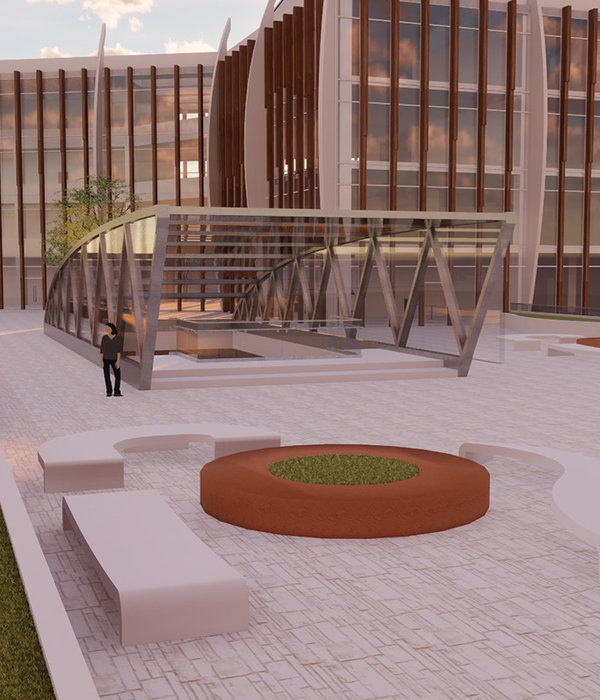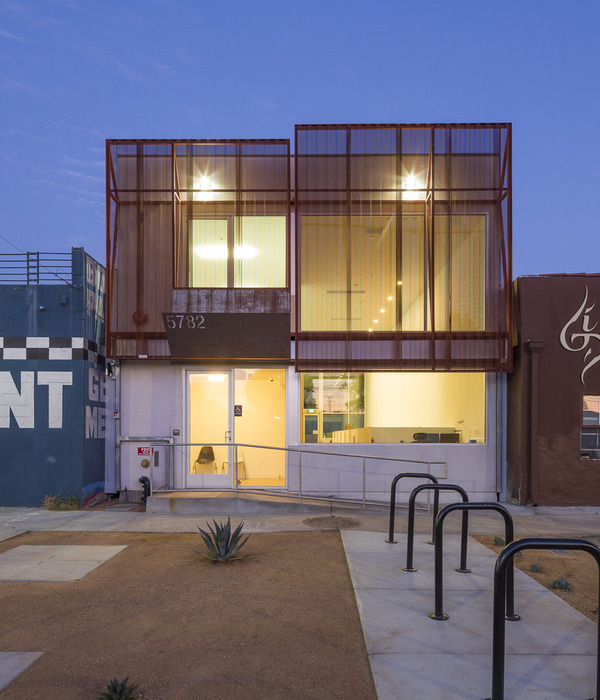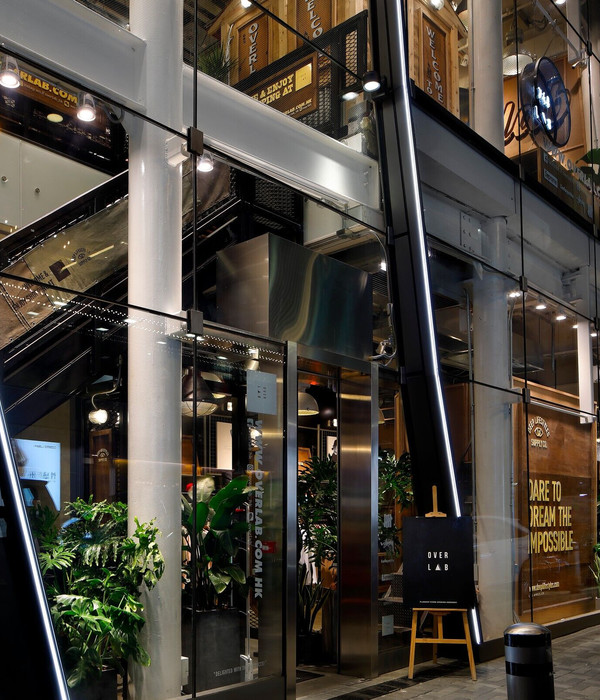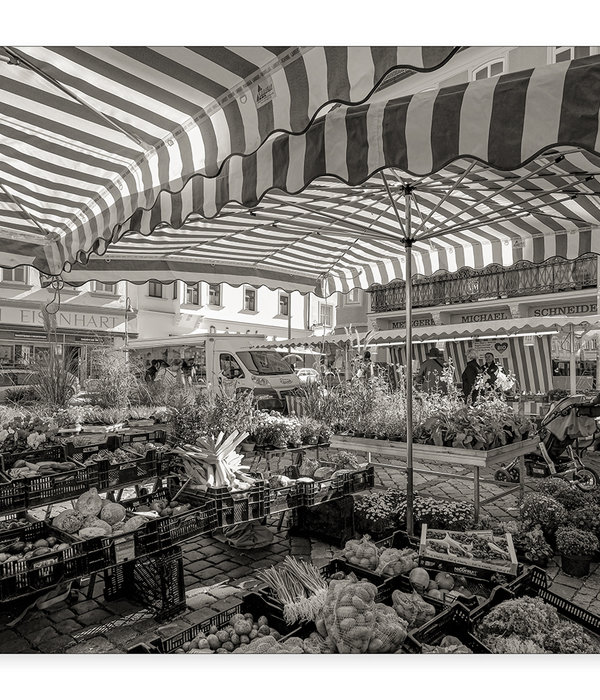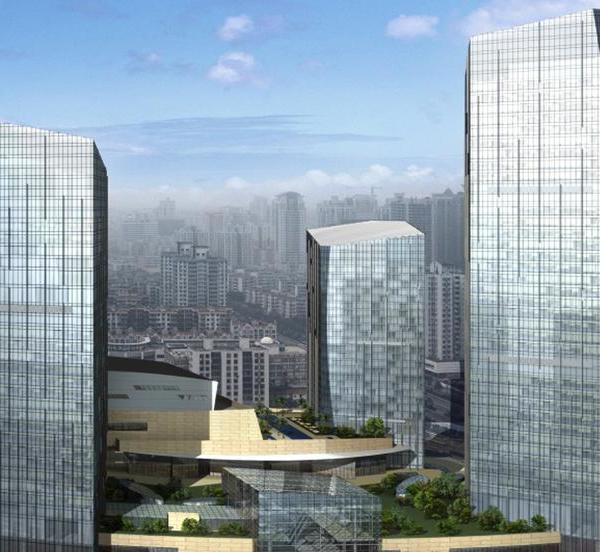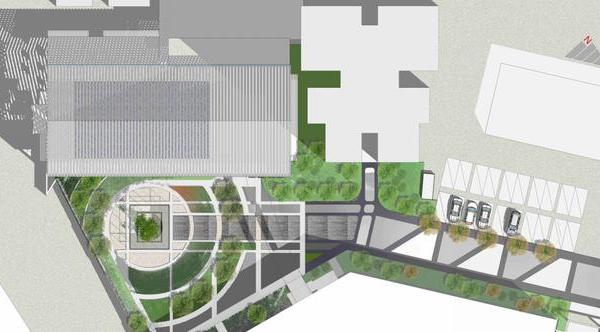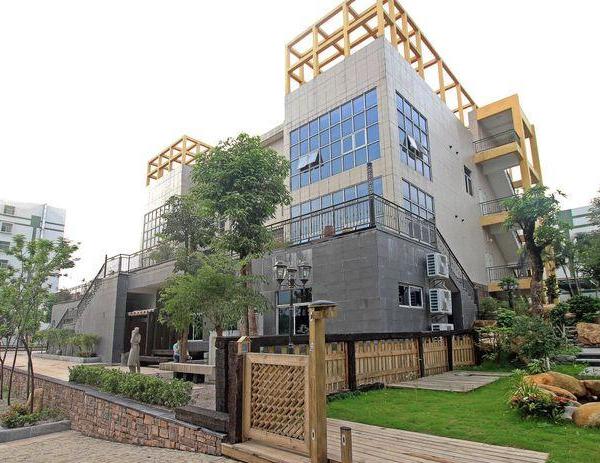非常感谢
Benthem Crouwel Architekten
Appreciation towards
Benthem Crouwel Architekten
for providing the following description:
德国奥斯纳布吕克大学校园总体规划包括第一期建筑群(图书馆、讨论区、大学建筑、校园和学生食堂)的框架。中心的大学建筑所在区域将来会建成校园活动区域和会议区。
鉴于该建筑所处的位置及“纽带”功能,建筑师将大楼设计成带剖面底层的三层体量。切口构造与外部区域建立了紧密的联系,同时成为大学建筑清晰、辨识度高的入口—一座特色鲜明的建筑由此产生。此外,精心设计的外部区域可以用来举办活动和会议。
Urban design
The master plan for the ‘Hochschulcampus Osnabrück’ (college campus Osnabrück, Germany) is the framework which includes the first building blocks (library, Forum, university building, campus and mensa). The centrally located university building is situated where in the future the campus area and the Forum will meet.
Because of this location and the position of the university building as “link”, the building is shaped like a volume of three floors with a cutaway at the bottom. The incision ensures a strong relationship with the outside area and gives the university building a clear, recognizable entrance: a striking building is created. In addition, the campus is enriched with a carefully designed outside area, which can be used for events and conferences.
清晰、简洁、紧凑
从悬臂式的建筑体量下方可进入向上开启的大厅:贯穿所有楼层的开放空间带来了巨大的开阔感。自然光线透过玻璃屋顶倾泻在整个大厅内。该区域可作为举办大学活动或非大学活动的场所。中庭和绿化庭院是紧凑布局的建筑体量内的特殊区域,为访客带来不同的体验感,并能简单清晰地提示方位。
由三个区域组成的空间布局形成了大楼清晰、简洁而紧凑的平面结构。教室和疏散楼梯位于大楼的两边,中间是大厅、机房和庭院。大讲堂垂直于大楼的主方向,获取来自庭院的自然光线。建筑师在现有地形条件下充分利用土地高度轻松地打造出讲堂所需的高天花板。
Clear, simple, compact
Upon entering the building (under the cantilevered section of the building) the hall opens upwards: open space along all floors creates a feeling of generous spaciousness. The glass roof allows natural light to flow through the entire lobby. This space can be used by the university, but can also be used for non-university events. The central atrium and green courtyard are special areas in the tightly organized building volume, which can be experienced in different ways and provide simple and clear orientation for visitors.
The layout (as three adjacent sections) leads to a clear, simple and compact floor plan of the university building. Classrooms and emergency staircases are situated on both sides of the building; in the middle part are the lobby, technical rooms and courtyard. The large lecture halls are perpendicular to the main direction of the building, and get their natural light from the courtyard. Due to the existing topography, the heights of the land is used in the new building, making it clear and simple to create the requested higher ceilings in the lecture halls.
学术景观
新建大楼的中心形成了“学术景观”。
大楼与外部的校园区域及讨论区域相互交错。讨论区延伸到大楼内,进入多层楼面的“学术景观”中。“学术景观”成为会面、讨论、学习和交流的集中区域。开阔的空间感和独特的剖面底部让“学术景观”成为具有自身独特个性的校园景观。
免费“学习区”在教育中将变得越来越重要。在当今社会,数字信息唾手可得,我们拥有便携式的笔记本和平板电脑以及其他轻松获取知识资源的渠道。人们随时随地利用这些媒体相互联系,组成灵活的团体。现在面临的问题是教学楼的布局如何满足新行为模式的需求。也许灵活的空间布局不失为一个很好的解决办法。而这也成为大楼“学术景观”的设计基础。
“学术景观”的所有楼层都相互连接。公共区有宽度不一的高台,熏烤过的橡木拼花地板;桌子和物件从一个平台延伸到另一个平台,这样不同高度的平台便紧紧“缝合”在了一起。桌椅为使用者提供了工作和学习的多种方式。懒人沙发和方体座椅等家具可供使用者根据需要灵活调整。此外,该设计十分注重音效和灯光效果。吸音材料和灯光设备创造了宜人的学习氛围。
Learning Landscape
The heart of the new university building is formed by the so-called learning landscape. The building interacts with the area outside where campus and Forum connect. In a way, the Forum is continued inside the building, in a ‘landscape’ consisting of various levels and platforms. The learning landscape becomes the central place to meet, connect, communicate, study and exchange information. The spatial quality and striking cutaway give the learning landscape the potential to become a unique spot on campus, with its own very distinct identity.
Free ‘learning zones’ will become increasingly important in education. After all, nowadays digital information is always available everywhere: laptops and tablets are mobile, constantly accessible sources of knowledge. People using these media can connect and form flexible groups anywhere and anytime. The question is to what extent the conventional layout of a university building still meets the requirements of these new behavioural patterns. Perhaps spaces with a flexible layout are a necessary complement to the traditional lecture halls. These considerations are the basis for the development of the learning landscape in the new university building.
In this ‘landscape’ all floors are connected. Plateaus of different width, with parquet flooring of smoked oak, create in the common areas. Tables and objects to sit on start at one and end on another platform, so that the different levels are ‘stapled’ to each other. The tables and sit-objects offer users different ways to work and study. Loose furniture such as bean bags and seating cubes invite users to create their own setups, depending on need. Particular attention is paid to the acoustics and the function of light in the building: sound-absorbing materials and integrated lighting elements ensure a pleasant atmosphere.
立面
建筑立面为带有1.25m网格图形的刚性结构。立面上不同高度的窗户为内部带来了更多光照和更好的通风效果。建筑外部,人们可以透过不同形状的窗户看到不同尺寸和形状的多样内部空间;而在建筑内部,透过不同高度的栏杆可以看到不同的功能分区。
建筑外表皮为两层结构:建筑体量外部包裹着绿色的隔热箔膜以抵御风雨的侵蚀。外部为多孔铝板。多孔的金属表皮打造了一个多变而生动的立面:绿色的建筑体在金属表皮内隐约闪现。受过阳极化处理的铝板呈现出近乎天鹅绒般的柔软感,使整个建筑的外观庄严而具有亲和力。切口有效地隐藏了窗户和构架。精确的切口元素贯穿建筑上下部分。基柱和檐口也被隐藏起来;百叶窗位于隔热表皮层,躲藏在金属外壳的后面。
Façade
The rigid structure of the facade with a grid pattern of 1.25m, is made more light and airy by using windows of different heights. Due to the arrangement of these differently shaped windows, the size and shape of the various internal spaces can also be read on the outside of the building. In the interior the different functions can be seen by the varying height of the balustrades.
The outer shell is designed as a two-tier structure: the building volume is coated with an insulating green foil membrane that protects the façade against wind and rain. On an aluminium sub-structure, a coating of folded panels – on the sides perforated aluminium panels – are mounted. The perforation of the metal skin creates a varied, lively view of the facade: you can see glimpses of the green building shine behind the metal. The anodized aluminium panels have a soft, almost velvety surface and give the building an important, yet friendly and inviting appearance.
The incisions are placed in such a way that the windows and frames are hidden from sight. The principle of these precise incisions is continued in the upper and lower part of the building; the plinth and cornice aren’t visible. The blinds are integrated into the insulating surface and are hardly noticeable behind the metal coating.
绿色
绿色寓意着该所大学的起源—前农学院的农业科学学院和景观设计学院。清新、充满活力和激发灵感的绿色为大楼带来极富特色的美丽外观,与由传统色彩和材料构成的建筑形成对比。
视觉交流
大楼采用传统印字来指示方向。墙壁上印刷的语录和字句引发着人们的好奇心。所有这些图形元素都是绿色的。玻璃墙和门上也用了同样色彩鲜明的印刷字元素。
Green
The colour green refers to the ‘origin’ of the university, which has its roots in the Faculties of Agricultural Sciences and Landscape Architecture of the former agricultural college. This fresh, stimulating and inspiring colour gives beautiful, striking and contrasting accents to a building which is mostly characterized by the use of restrained colours and materials.
Visual communication
For way-finding in the new building an original typographic has been developed. Quotes and printed collections of words on the walls are there to inspire and arouse curiosity. All these graphics elements are presented in the colour green. The same typography is used on glass walls and doors, as a contrast marker for the visually impaired.
Client:Stiftung Fachhochschule Osnabrück
Architect:Benthem Crouwel Architects
Project data
Competition: August 2010
Start construction: April 2012
Completion: April 2014
Gross floor area:7.280 m²
Program:
8 lecture halls
24 meeting rooms
4 project areas
1,000 m² open study area
Location:Campus Westerberg, Barbarastraße, Osnabrück, Germany
Lead architect:Markus Sporer
Project team:
Markus Sporer, Cornelius Wens, Sander Vijgen, Anna Gerlach, Joris Görling, Daniel Vlasveld, Carel Weber
Structural Engineering:Kempen Krause Ingenieure GmbH, Aachen, Germany
Building physics:ENAKON Wolfenbüttel GmbH, Hannover, Germany
Mechanical services:IQ Haustechnik, Krefeld, Germany
Interior architect:Benthem Crouwel Architects
Graphic design interior:Thonik, Amsterdam, The Netherlands
Photographer:Jens Kirchner
▼地面层 Ground floor
▼一层 First floor
▼二层 Second floor
▼东立面 Facade east
▼立面 Facade
▼剖面图 Section
▼剖面图 Section
MORE:
Benthem Crouwel Architekten
,更多请至:
{{item.text_origin}}

